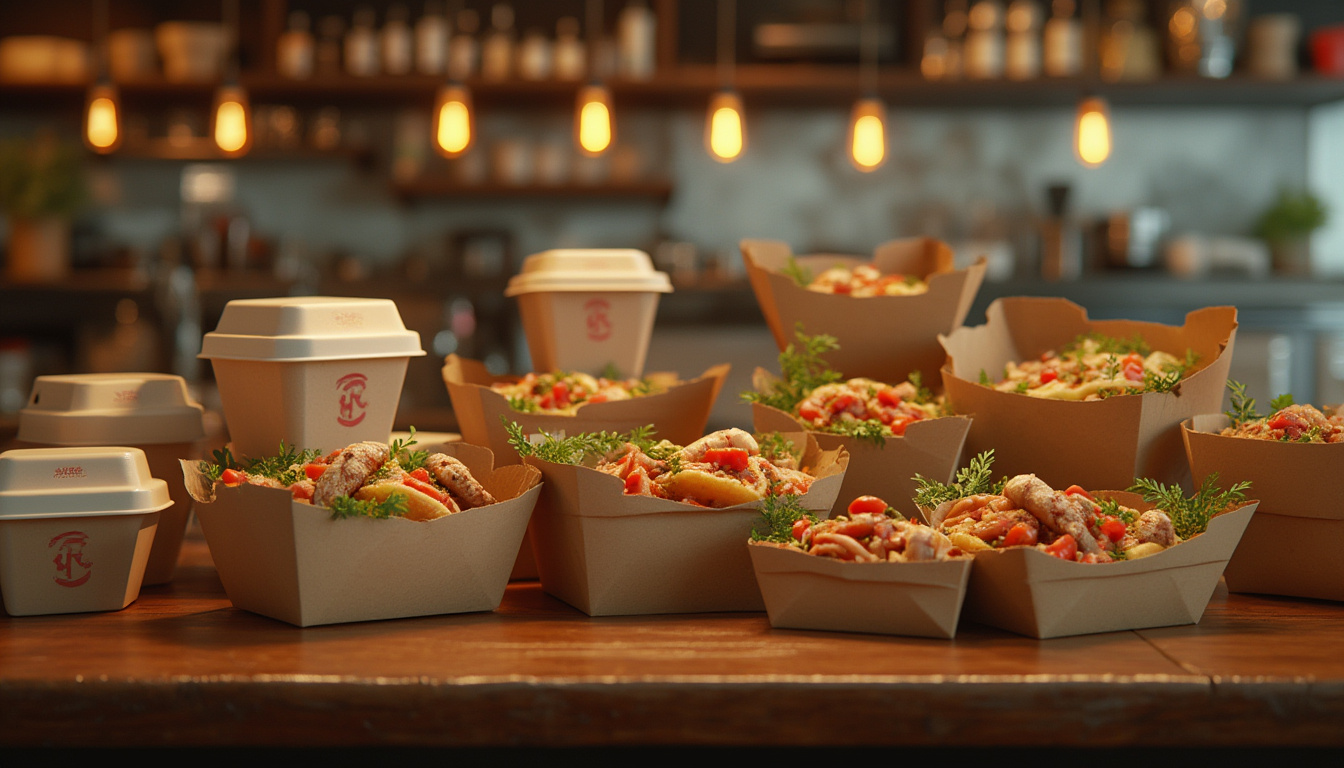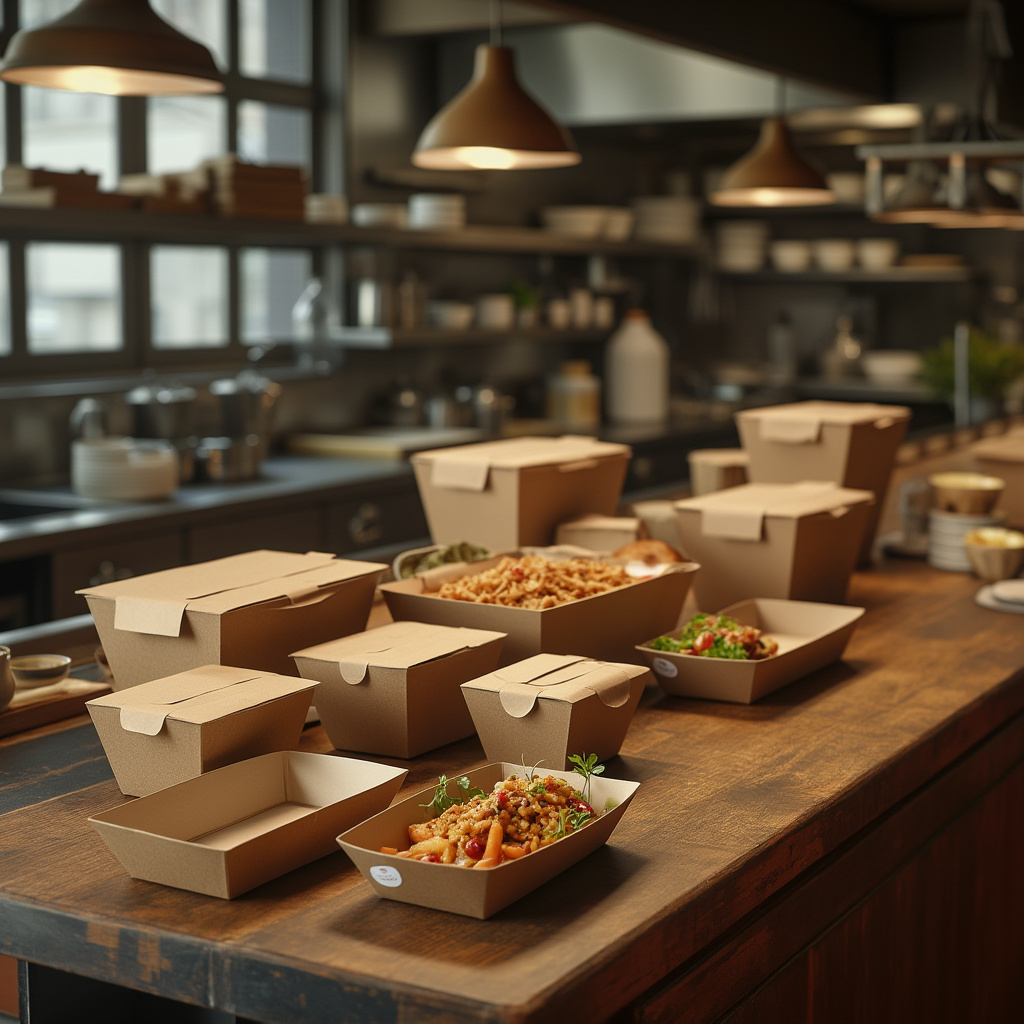The Rise of Takeout and the Importance of Proper Packaging
The way people consume food has undergone a significant shift in recent years. The rise of food delivery and takeout services has become a cornerstone of the modern dining experience. According to recent statistics, the food delivery market has seen a 20% increase over the past five years, with no signs of slowing down.
As restaurants adapt to this trend, the importance of high-quality takeout containers has never been more evident. These containers are more than just a means of transporting food; they are an extension of your restaurant’s brand and a critical factor in ensuring customer satisfaction.
When selecting takeout containers, there are several key factors to consider. From durability and size to eco-friendliness and branding opportunities, making the right choice can have a significant impact on both your customers’ experience and your bottom line.
Quality and Durability: The Foundation of Good Packaging
First and foremost, the quality and durability of your takeout containers cannot be overlooked. A container that leaks, bends, or falls apart during transit can lead to a disappointing experience for your customers and potentially harm your restaurant’s reputation.
Opt for containers made from sturdy, food-grade materials that can withstand the rigors of transportation. For hot foods and liquids, prioritize containers that are insulated or made from heat-resistant materials to prevent leakage and maintain temperature.
Investing in durable containers may seem like an extra expense upfront, but it can save you money in the long run by reducing the need for frequent replacements and minimizing the risk of customer complaints.
Size and Shape: Finding the Perfect Fit
The size and shape of your takeout containers are equally important. Containers that are too large can lead to wasted space and unnecessary costs, while those that are too small may not hold the intended portion size.
Choose containers that are specifically designed for the types of dishes you serve. For example, deep containers are ideal for soups and sauces, while shallow ones are better suited for salads or pastas. Having a variety of sizes on hand allows you to package different menu items appropriately.
Consider the shape of the container as well. Round containers are great for liquids, while square or rectangular ones are more versatile for solid foods. The goal is to ensure that the container complements the food it holds, both in terms of functionality and presentation.
Food Type: Matching Containers to Menu Items
The type of food you serve plays a crucial role in determining the right takeout containers for your restaurant. Hot dishes, for instance, require insulated containers to maintain their temperature and prevent them from becoming soggy or cold during transit.
Cold items, on the other hand, need containers that can prevent condensation from forming. This is especially important for dishes like salads, sandwiches, and sushi, where moisture can quickly lead to spoilage.
For meals with multiple components, such as combo meals or family-style dishes, consider containers with compartments. These not only keep the food organized but also make it easier for customers to enjoy their meal on the go.
Eco-Friendly Options and Beyond: Enhancing the Takeout Experience
As consumer awareness about environmental issues grows, restaurants are increasingly turning to eco-friendly takeout containers. These options not only align with customer values but also contribute to a more sustainable future.
Biodegradable, compostable, or recyclable containers are becoming the norm. Materials such as paper, sugarcane, or corn-based plastics are popular choices, offering a greener alternative to traditional plastics. By switching to these options, restaurants can appeal to environmentally conscious customers while reducing their environmental footprint.
Branding Opportunities: Making a Lasting Impression
Your takeout containers are more than just packaging—they’re a marketing tool. Custom-printed containers with your restaurant’s logo, branding, and contact information can enhance brand visibility and create a professional image.
Even if custom printing isn’t feasible, adding stickers or labels with your logo and contact details can make a big difference. This subtle branding reinforces your restaurant’s identity and helps customers remember where their meal came from.
Ease of Use: A Key Factor for Customer Satisfaction
Ease of use is a critical factor for both your staff and your customers. Containers that are difficult to fill or seal can slow down your kitchen workflow, while containers that are hard for customers to open can lead to frustration.
Opt for containers with secure, leak-proof lids and easy-opening designs. Simple, intuitive packaging ensures that your staff can prepare orders quickly and that customers can enjoy their meals without hassle.
Cost Considerations: Balancing Quality and Affordability
While quality is essential, cost remains a significant factor for most restaurants. Finding the right balance between durability and affordability is key to managing your budget effectively.
Consider buying containers in bulk to reduce costs. While high-quality containers may have a higher upfront cost, they often pay off in the long run by reducing waste and minimizing the need for frequent replacements.
Storage and Space Efficiency: Maximizing Kitchen Space
Kitchen storage space is often limited, making it important to choose containers that are stackable and space-efficient. Stackable containers can help maximize vertical space, keeping your kitchen organized and clutter-free.
Opt for containers with uniform sizes and shapes to ensure they fit neatly together. This not only saves space but also streamlines your packaging process, making it easier for your staff to grab what they need quickly.
Regulations and Compliance: Ensuring Safety and Standards
Local health and safety regulations often dictate specific requirements for takeout containers, especially for hot foods. Ensuring your containers meet these standards is crucial to avoid potential issues and maintain customer trust.
Research local regulations and choose containers that comply with health and safety standards. This not only protects your customers but also helps you avoid legal complications and reputational damage.

Conclusion
In the evolving landscape of food delivery and takeout, the importance of proper packaging cannot be overstated. High-quality, durable, and appropriately sized containers are essential for maintaining food quality, ensuring customer satisfaction, and upholding your restaurant’s reputation. Additionally, eco-friendly options, branding opportunities, and ease of use are critical factors that can set your restaurant apart from the competition.
By investing in the right takeout containers and considering factors such as food type, cost, storage, and regulatory compliance, you can enhance the overall takeout experience for your customers while supporting your business goals. Remember, your packaging is not just a container—it’s an extension of your brand and a key element in creating lasting customer loyalty.

Leave a Reply